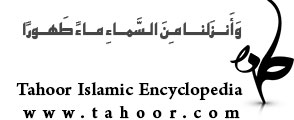
Felicity capital in monotheism, prophecy and imamate briefly
This treatise is one the Mirzä Ahamd Äshtiyäni’s works and writings that has been written in Persian. In this treatise the author has explained subjects about monotheism, prophecy, Imamate and also has related a brief subjects about resurrection.
The author’s brief biography:
Mirza Ahmad Ashtiyäni, the Imamism Shi’te “jurisconsult”(jurist) and philosopher, the fourth and youngest child of Mirza Hasan Mojtahed Äshtiyäni, well-####known jurisconsult of Naser Al-Din Shäh and Mozaffar Al-Din Shäh Qäjär time, was born in Tehran in 1883A.D. (1300A.H.). After learning the Arabic preliminaries and Persian literature, at the presence of his father studied the preliminary level of “jurisprudence”(fegh), “methodology”(osul) and after his father death in (1901A.D./1319A.H.), continued his studies in the presence of other scholars such as Seyyed Mohammad Yazdi, Mirzä Häshem Rashti, Hakim Kermänshähi and Hakim Eshkevari and then began instructing the “transmitted and rational” (maghool and manghool) in Sepahsälär school. He left for Holy Najaf in 1921 A.D.(1340A.H.) and in addition to benefited from the presence of masters such as Allame Näini and Äghä Ziä’e Aräghi, he also himself instructed the philosophy. He returned to Iran in 1931A.D.(1350A.H.) and spent the rest of his life in Tehran and instructing the jurisprudence, methodology, “rational sciences”(oloom aghli), writing book and guiding the people. Up to end of life he was in charge of Marvi’s theological school, the biggest theological school of Tehran. In addition to “rational and transmitted sciences” (oloom aghli and naghli), Mirza Ahmad, knew about old medicine, old sciences and mathematics. He had beautiful hand writing and composed poetry with pseudonym of “Väle”. He was good-tempered Gnostic, humble, pure-hearted, faithful to religion and super fine example of piety. Mirza Ahamad got permission of Ejtehäd from the authority of that time such as: Mirza Hassan Näini, Hä’eri Yazdi, Äghä Ziyä Al-Din Aräghi, Seyyed Abul Hassan Isfahäni and Häj Äghä Hassan Borujerdi. The result of his marriage was two boys and four daughters. Ayatollah Ashtiyäni after about 80 years teaching and learning, training the people, serving to Islam and Muslims, died at the age of ninety five in 1975/Jun/34 (1354/tir/3 S.H.or 1359/6/14A.H.). He buried in his family tomb in courtyard of Shah Abdol Azime shrine.
The book structure:
1- Monotheism: The way of knowledge of world’s Creator or knowledge of God (thinking on the “signs in One’s being” (Äyäte Anfosiye) and “sign upon the horizons” (Äyäte Äfäghiye). The first subject: on proving the unique aspect of the world’s Creator
2- Prophecy: the second subject on proving the prophecy
3- Imamate: a brief subject about Imamate
Also in the end of book has been related the resurrection subject including subjects about returning of the spirits, purgatory and subjects about this topic from the Noble Quran. Apparently this treatise has been written in 1961A.D. (1381A.H.) and has been printed five times up to 1969A.D, (1389A.H.). This treatise was translated into Arabic by the order of Ayatollah Hakim and was printed in Iraq by the name of “Asäs Al-Sa’ädat” (The Basis of Felicity).
Sources :
Felicity capital in monotheism, prophecy and imamate briefly by Ahmad Ashtiyani